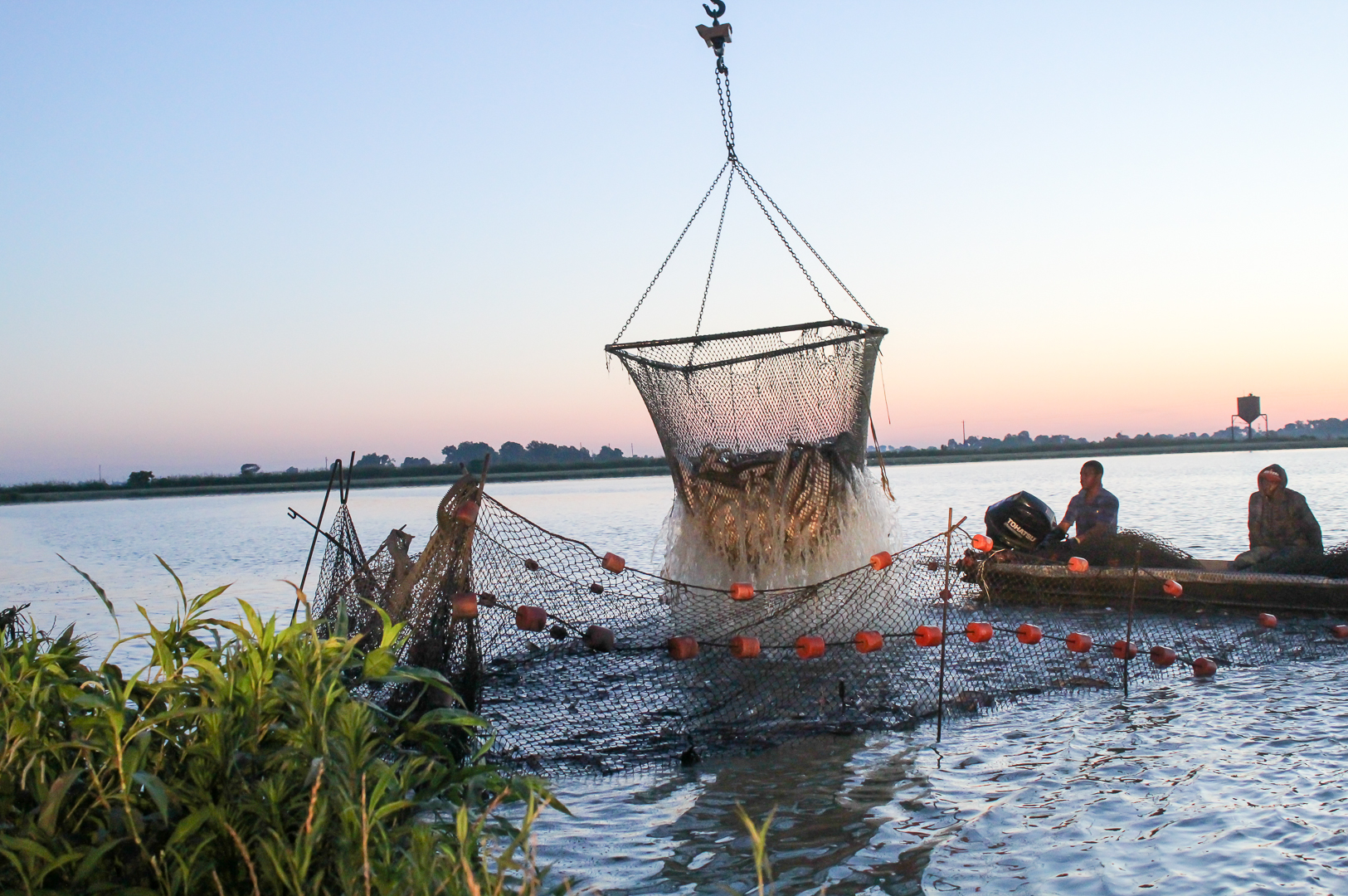The information presented on this page may be dated. It may refer to situations which have changed or people who are no longer affiliated with the university. It is archived as part of Mississippi State University's history.
LAST YEAR, more than 84.1 million foodsize catfish were produced and sold in Mississippi, bringing the state $221 million in revenue. Mississippi may be king as the nation's largest catfish producer, but fresh, refrigerated fillets begin to decline after 72 hours in the grocery store. This drop in food quality makes every part of the production process, from harvest to consumer, a race against the clock. Researchers in the Mississippi Agricultural and Forestry Experiment Station, or MAFES, have been testing a way to nearly triple the shelf life of this Magnolia State staple.
Chemco Corporation, a prominent manufacturer of chemical and sanitation products, reached out to MAFES researchers with a proposition: test chitosan, a groundbreaking preservation product, on various food products. Chitosan serves as an antimicrobial barrier, killing off both common spoiling bacteria and dangerous pathogenic bacteria by attaching to the negatively charged bacterial cell walls and inhibiting DNA reproduction.
Dr. Shecoya White, assistant professor in the Department of Food Science, Nutrition and Health Promotion, works to replace synthetic chemicals used to maintain quality and safety of food products with natural antimicrobials. White played a pivotal role in the chitosan study as a food microbiologist. Dr. Derris Devost-Burnett, assistant professor and meat scientist in the Department of Animal and Dairy Sciences, has devoted his career to research that provides practical benefits to the food industry. When they were introduced to chitosan, they saw its potential immediately.
"Chitosan is a byproduct that comes from the exoskeletons of arthropods, including shrimp and insects. Once it's processed, it can be applied to foods to create a barrier between microbes and the food itself. Sometimes this kills the microbes, and sometimes it prevents them from growing. Either way, it's been shown to increase shelf life by a considerable amount," Devost-Burnett said.
Previous research has shown that, despite being a byproduct of shellfish, chitosan will not harm those with shellfish allergies and has increased shelf life when applied to produce such as strawberries. MAFES researchers were especially excited to test the effects on catfish.
Devost-Burnett shared why catfish made the perfect candidate for a shelf life extension study.
"Somewhere around 40 percent of food in the United States never makes it to the plate for one reason or another. A lot of that loss is due to spoilage, which means that 40 percent of our foods and food profits go straight into the garbage, and that number is even higher for seafood. Consumers generally want the freshest seafood possible, including catfish, but unless you cook the catfish within a day or two, it is no longer fresh," Devost-Burnett said.
In trying to lengthen the shelf life of one of Mississippi's most profitable industries, MAFES researchers knew that their first step would be to secure fresh catfish samples from local processors and immediately apply the chitosan solution.
White shared that, alongside measuring the overall effectiveness of chitosan applications, the team also tested which method of application resulted in the best shelf life: electrostatic spray, dipped application, or steam application.
"We tried to eliminate as many variables as possible, aside from the application method. All of the catfish fillets were the same size, all were kept at the same temperature, all were sampled at the same time of day. With all of those steps in place, we were able to see that dipping the catfish into the chitosan solution increased the shelf life tremendously. Our control, which didn't have chitosan, was spoiled by day two. On day eight, the dipped catfish's bacteria levels were still well within the safe zone," White said.
Despite the bacteria levels remaining within the safe range, the team did notice a slight color change in the catfish over its newly-extended shelf life. They attribute it to oxidation, but White shared how this color variation may affect consumption.
"We have to remember that this is food we're trying to make last longer. The bottom line for food consumption is desirability, meaning that, even if the bacteria levels are still completely safe, if it looks or tastes unappetizing, the consumers won't want it, and the product we use to extend the shelf life is inadequate," White said.
The true test of desirability will be when the catfish is presented to a sensory panel over the next few months.
This panel will be trained to objectively appraise a catfish fillet and will give the researchers valuable insight to characteristics that cannot be measured by a microscope, such as the taste, smell, texture, and how appetizing it is overall. From there, the researchers will have a better grasp of whether or not the chitosan solution is a viable and worthwhile step to add to industry production.
Assuming that the slight discoloration is not a deterrent for consumers, chitosan has the potential to boost Mississippi's catfish economy while also having a positive impact on the environment. Alongside the potential to reduce food waste, in and of itself a sustainability-conscious benefit, the fact that chitosan is the natural byproduct of a fish's exoskeleton makes it a non-synthetic, renewable resource. While more companies and consumers alike turn to ecofriendly, green-label products, MAFES scientists plan to press on with chitosan research so that it can one day be integrated into the industry and further help preserve the catch.
This research was funded by Chemco, LLC, the Mississippi Agricultural and Forestry Experiment Station Special Research Initiative, and the Undergraduate Research Scholars Program.
Somewhere around 40 percent of food in the United States never makes it to the plate for one reason or another. A lot of that loss is due to spoilage, which means that 40 percent of our foods and food profits go straight into the garbage, and that number is even higher for seafood.
Dr. Derris Devost-Burnett


